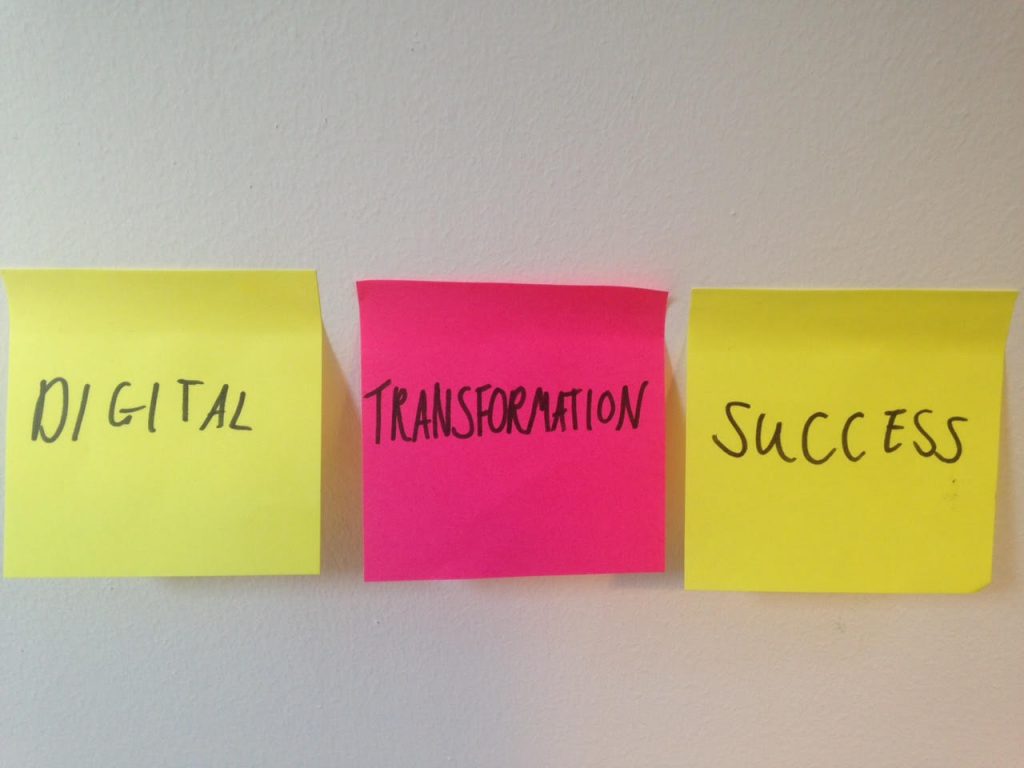Digital transformation is the buzzword of the moment. Chances are that your organisation is either in the thick of it, about to start it or at least talking about whether to do it or not.
But what does it actually mean? In his recent blog, Matt Collins points out that definitions are few and far between. And if you’ve yet to be convinced about the need to go digital then Matt’s blog is a treasure trove of useful stats as to why you should.
If you’re still confused, then you are not alone. A recent survey revealed that while more than 86 per cent of business leaders think that their organisations must undergo digital transformation, only half feel that they fully understand it. Meanwhile, CISCO’s new research tells us that staff want their leaders to demonstrate a clear digital vision, a positive digital culture and confidence in digital tools and skills. To be fair to leaders, how can they do this unless charities as a whole have a wider understanding of what digital transformation is? How can you lead it if you don’t know what it is or what success looks like? And how can you hold the process to account if you aren’t clear on any of these things?
So, what IS digital transformation? Let’s start with what it isn’t. It is not simply a new website, or training your staff in how to use social media. Those things may well be part of the process, but they shouldn’t lead it. In fact, I would argue that approach is risky if the underlying strategy isn’t clear. If the flagship of your transformation process is a new CRM, for example, but the overall direction of travel hasn’t been decided, you could be putting all your eggs in one basket if something goes wrong. I’ve seen this happen in more than one organisation recently where the entire transformation process was configured around a new platform. In both cases, the platforms went over budget and their digital transformations are now ‘on hold.’ The bedrock of any digital transformation process should always be a good strategy.
Without a strategy, how do you know if the tools you choose will help you achieve your goals? And how will you sense check their progress along the way? Digital transformation should never be a bolt on. The best definitions of it that I have found reveal exactly why it can be a little daunting- it involves reinventing the way organisations do business, using digital as a catalyst for that change.
This piece from The Guardian defines digital transformation as restructuring every aspect of the way you do business, from product development to the services you offer to processes and how you communicate with your audience, putting digital at your organisation’s heart. I really like McKinsey’s definition, which argues that digital transformation is actually a Trojan horse for a much broader business transformation, including everything from organisational structure, talent, culture, products and services.
Should we really be talking about digital transformation at all? Shouldn’t we just be talking about transformation, and how digital is a means to get there?
The next problem is that the definitions above can feel a little abstract to organisations. They are broad on what success looks like. But this isn’t a problem with the definitions per se. The point is that your organisation needs to sit down and work out where they want the transformation to take them.
Let me give you an example. We’re currently working with a charity on a big digital transformation project. We began by helping them understand what digital transformation would involve for them (i.e. the big picture stuff above). Then we went through their strategy and, for every objective, looked at how they could use digital to help them achieve it. I guarantee that if your organisation does this you will be amazed at how much you can do using these channels. This is not to negate the importance of the valuable work you may do offline. It’s about bringing everything together and truly integrating digital into how you do business.
What can we conclude from this? The term digital transformation is a red herring; it’s ultimately about business transformation to ensure that every area of your organisation is fit for purpose in the digital age. Bluntly, it’s about how you can stay one step ahead of your audience and the competition.
Whether you call it digital transformation or not doesn’t really matter. You just need to do it. The fact is that everything you do in digital- whether it’s a social media campaign, service delivery or improving systems- needs to be transformative, helping your charity do things better and better. We live in volatile times and there is no such thing as business as usual anymore.
I’ve got a lot more to say about this. Next time I’ll be writing about the key elements of your digital transformation. We’ll also be producing lots more content about digital transformation and running a course on how to do it. Sign up to our newsletter or follow me @zoeamar for all the latest.
If you’d like to chat about a digital transformation project please email me on zoe@zoeamar.com

